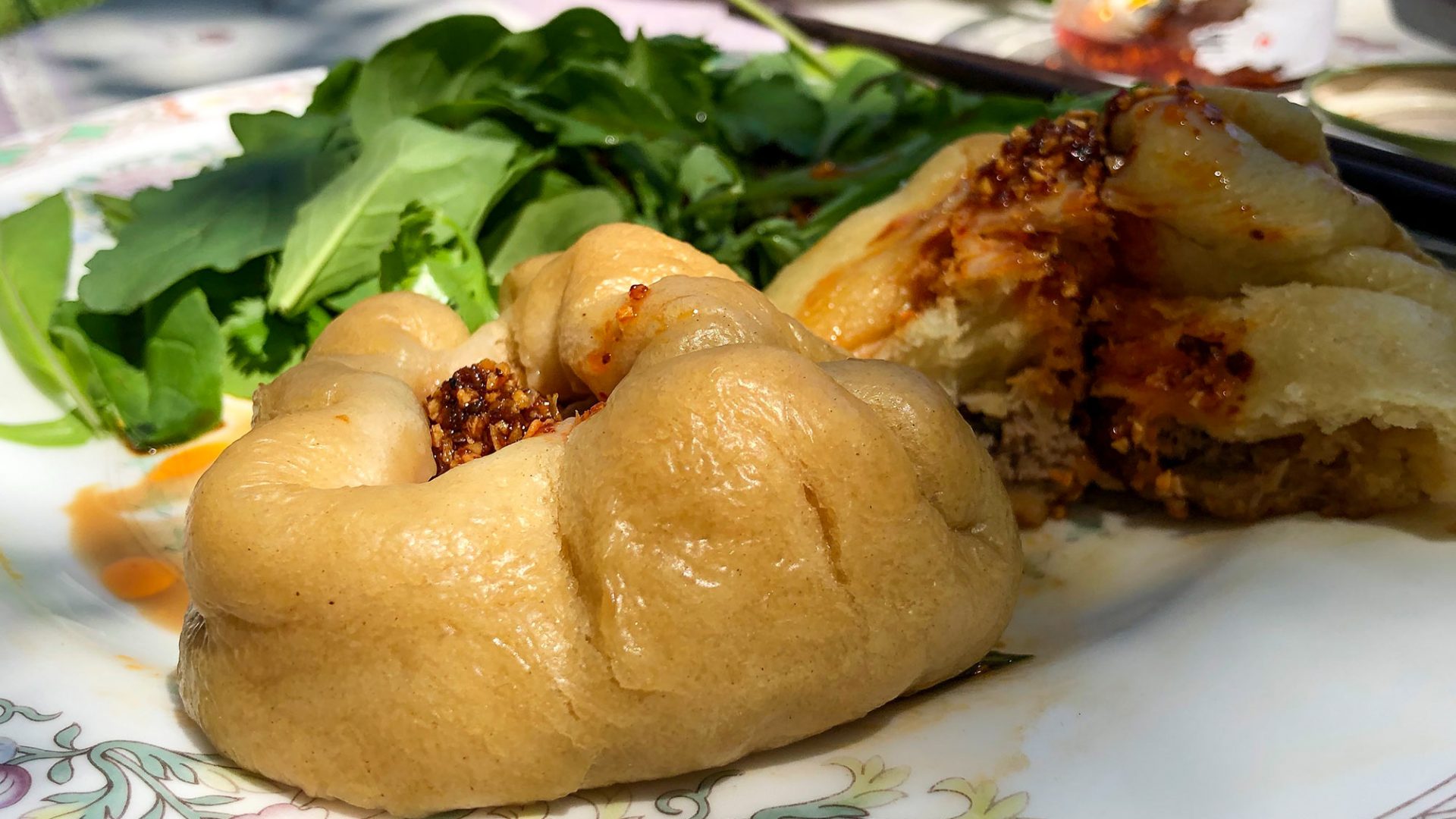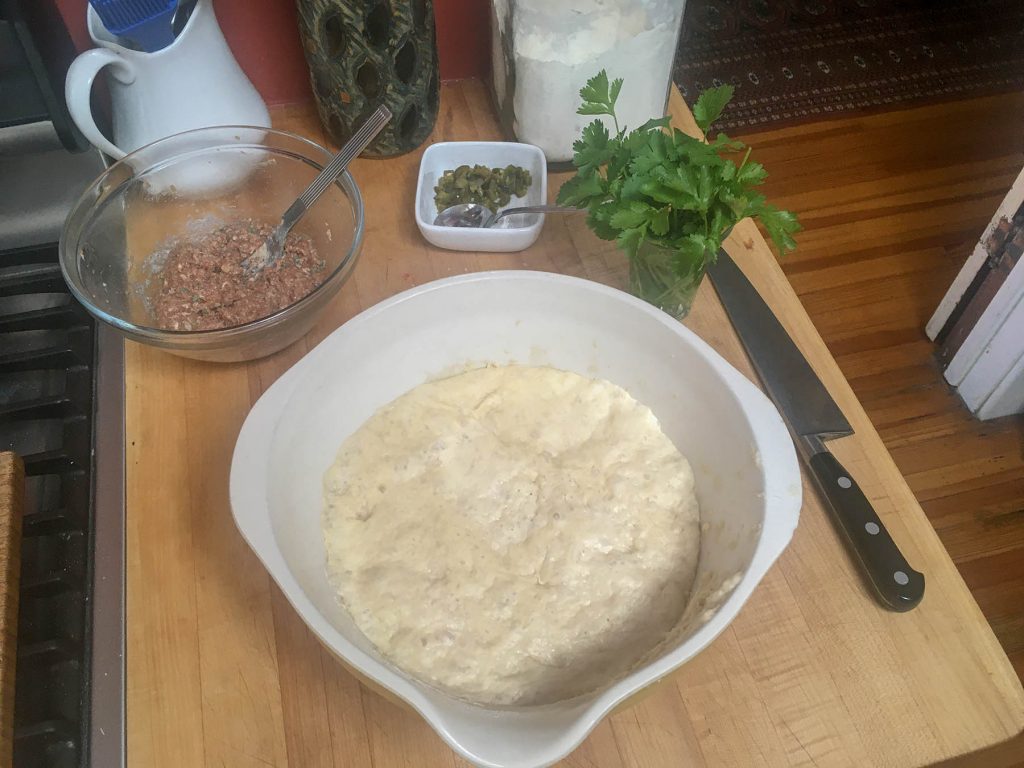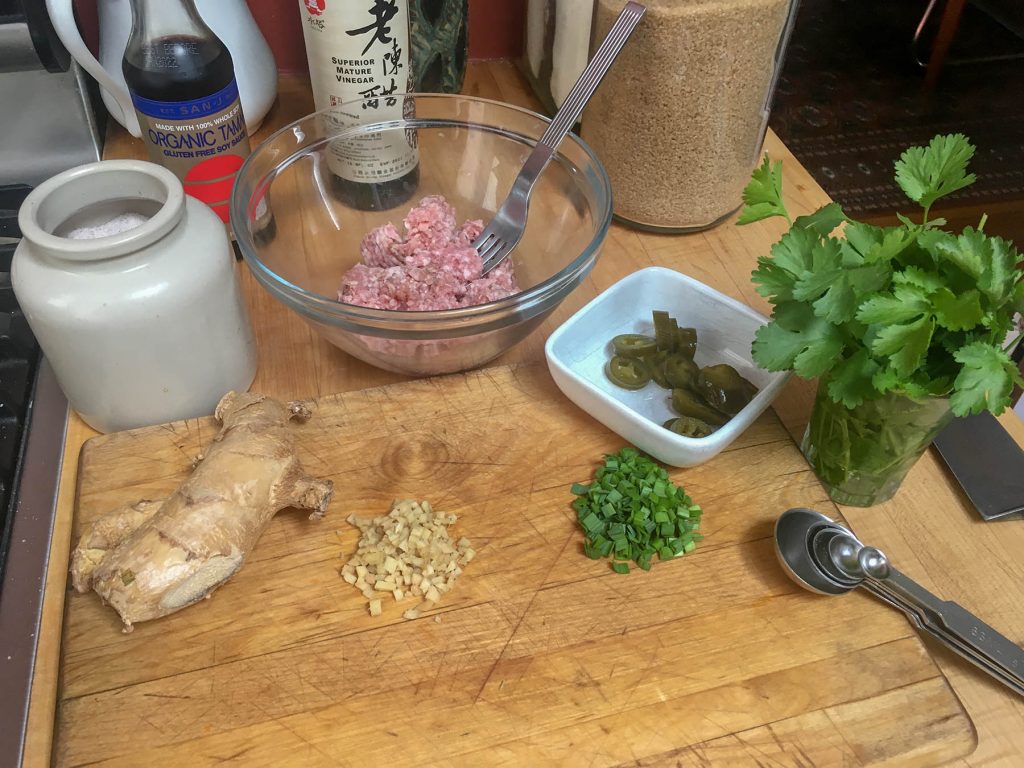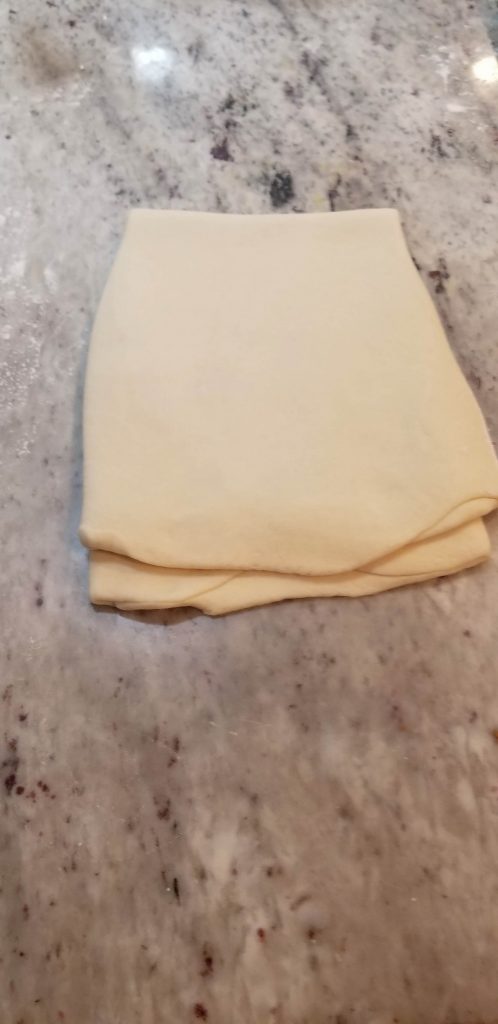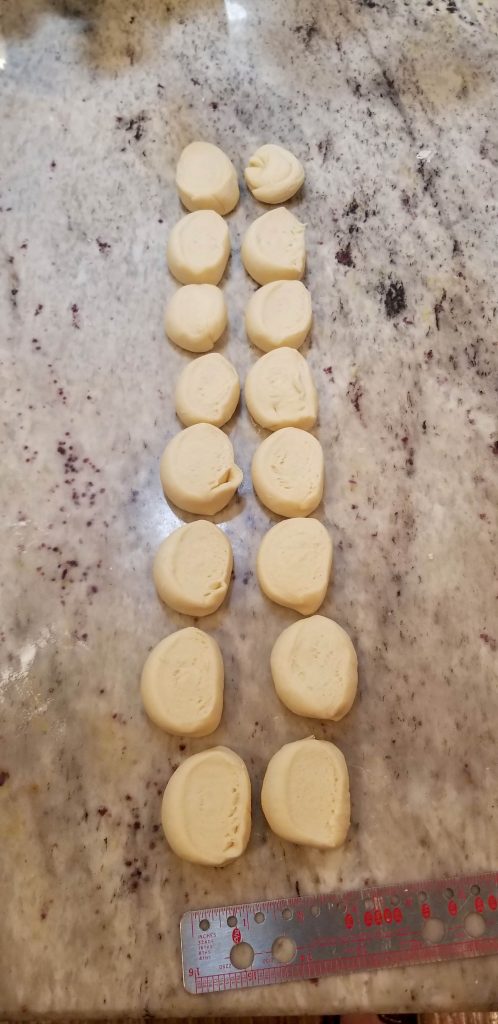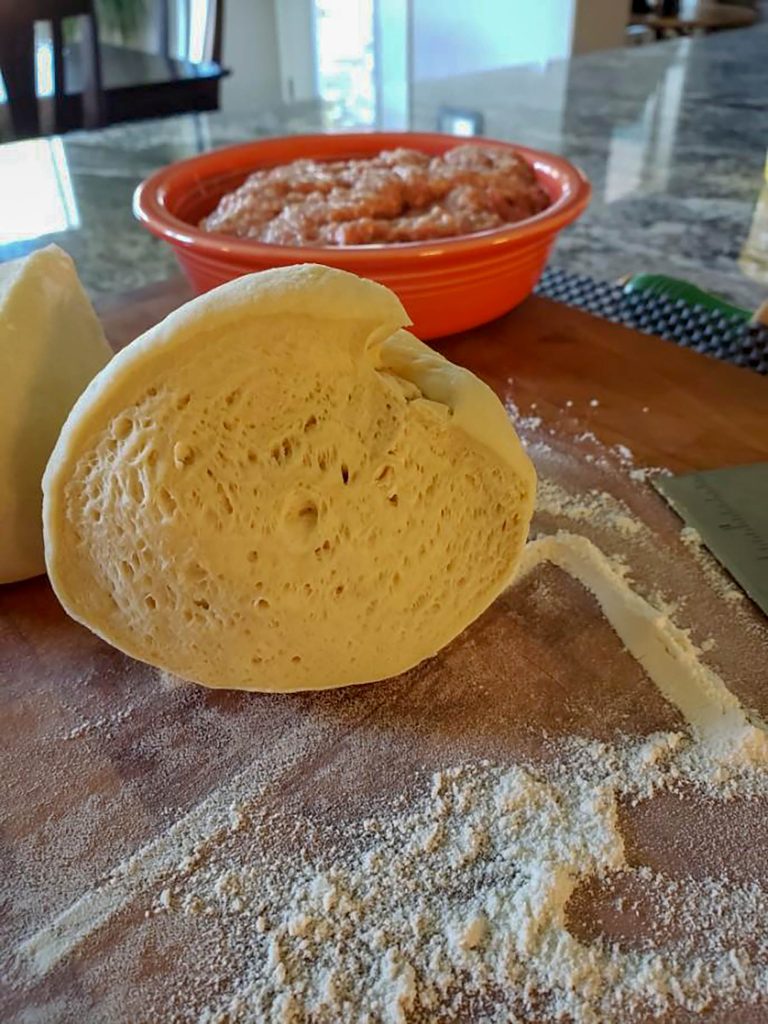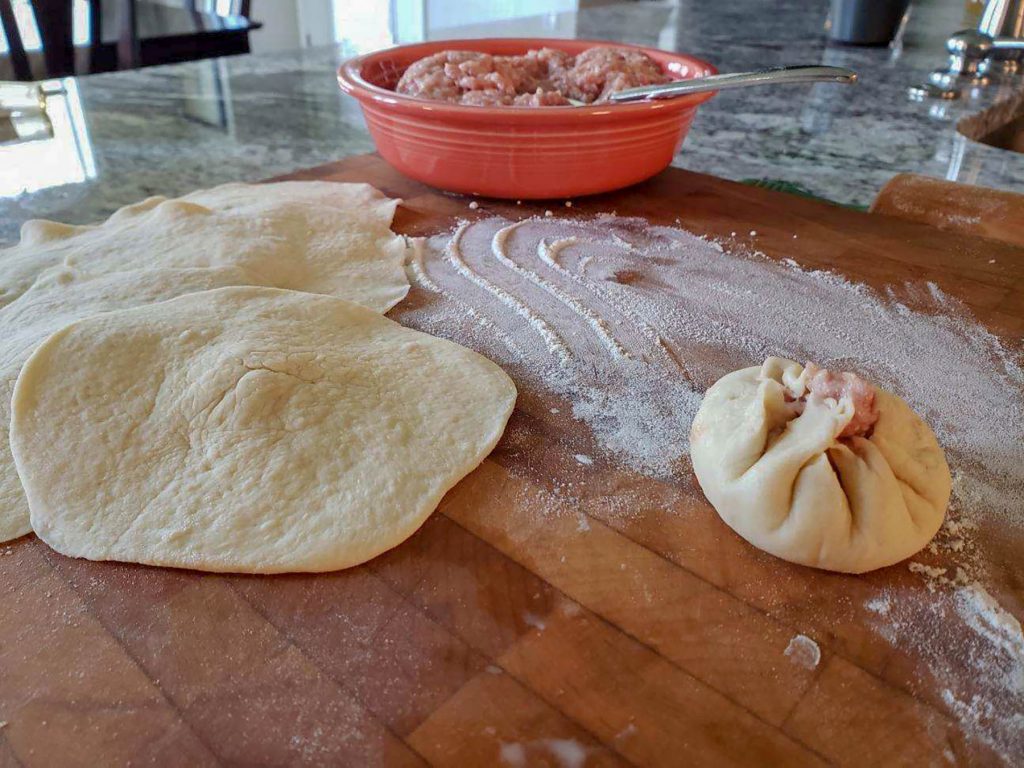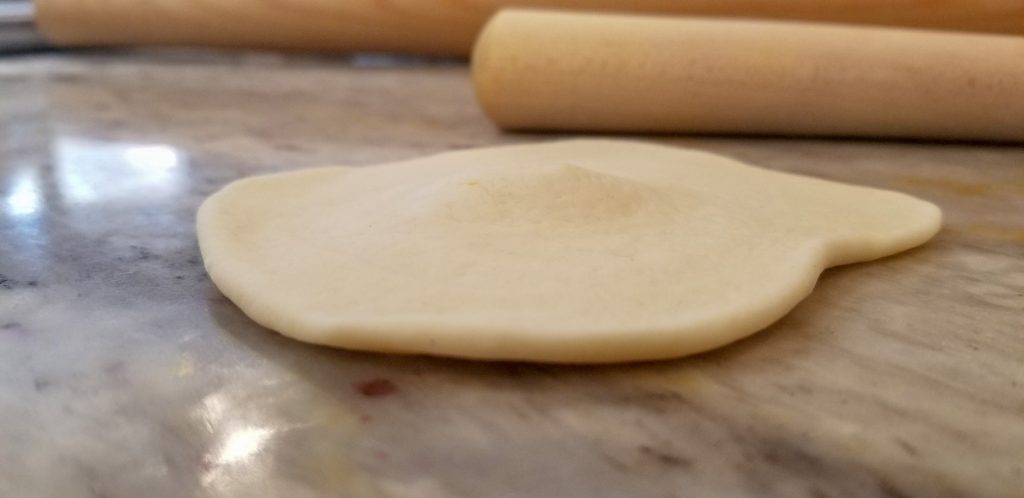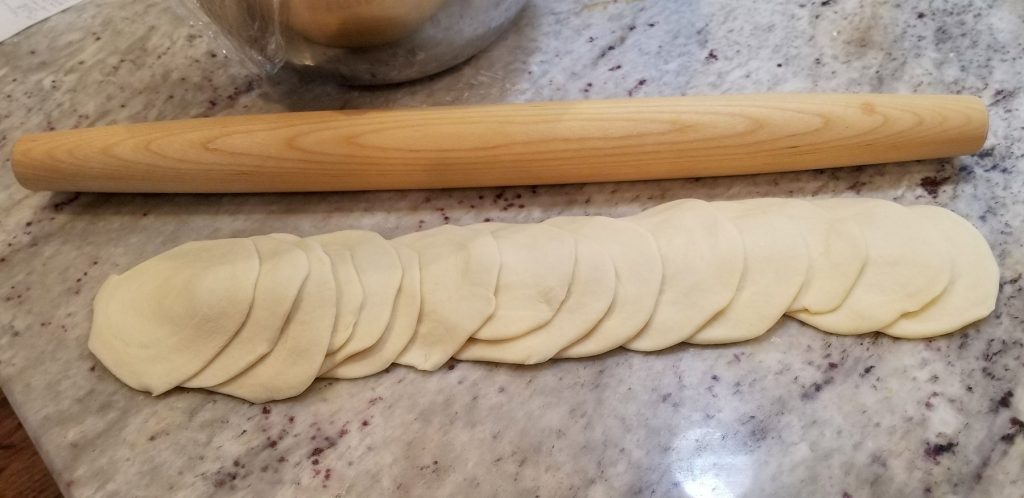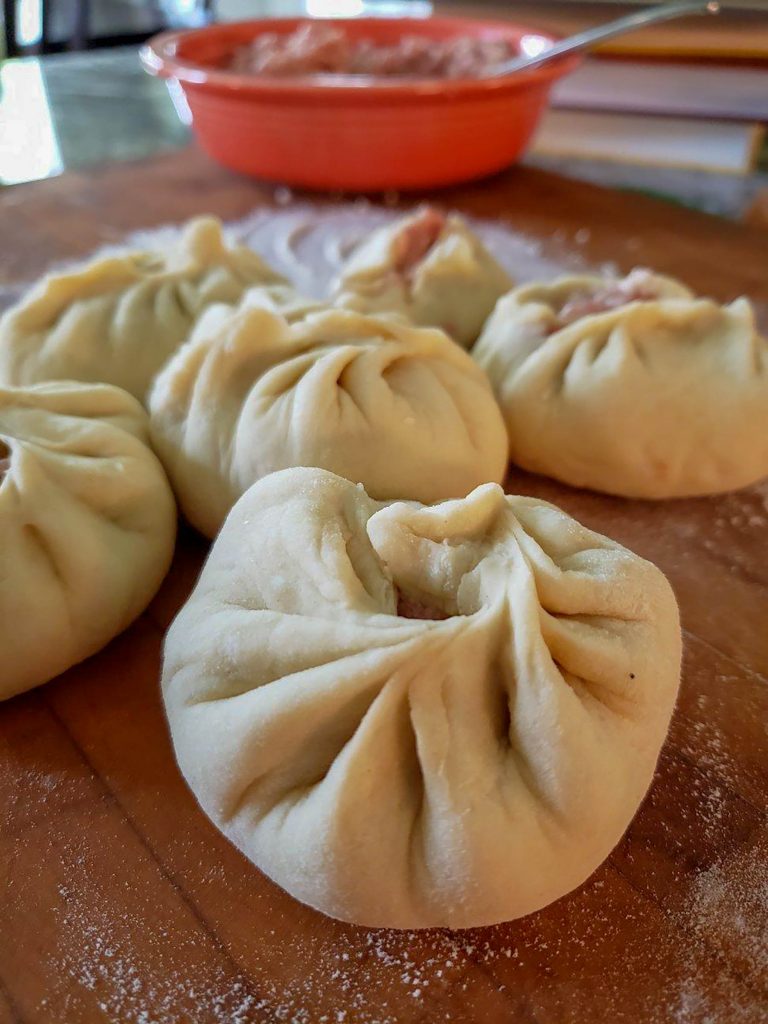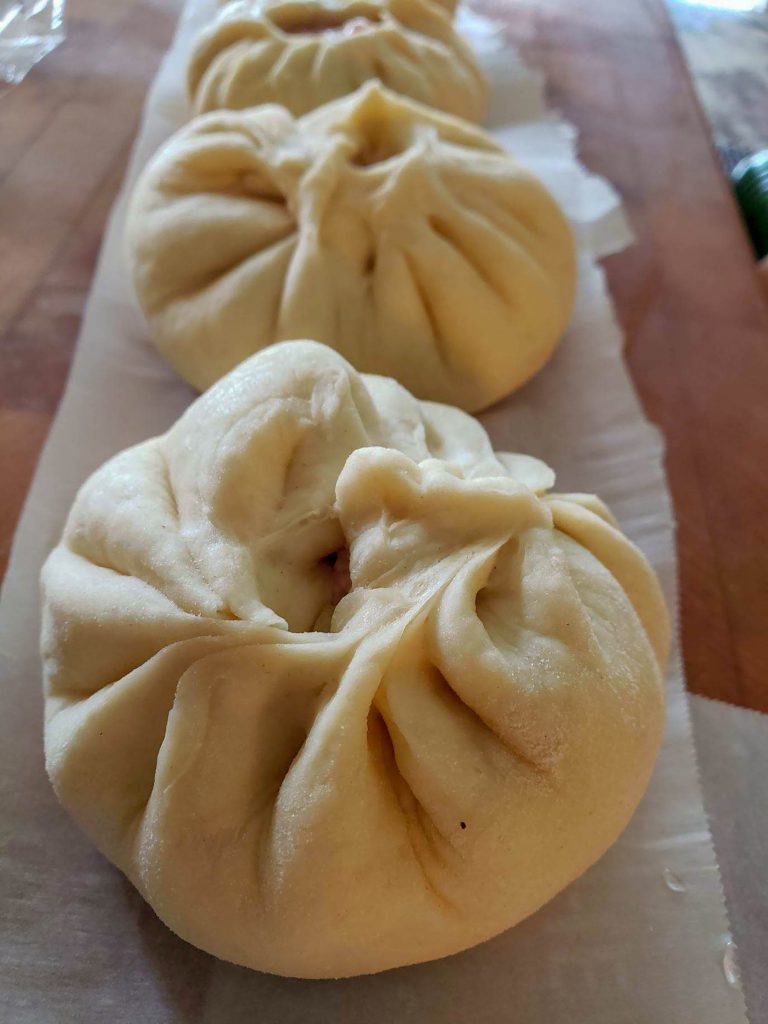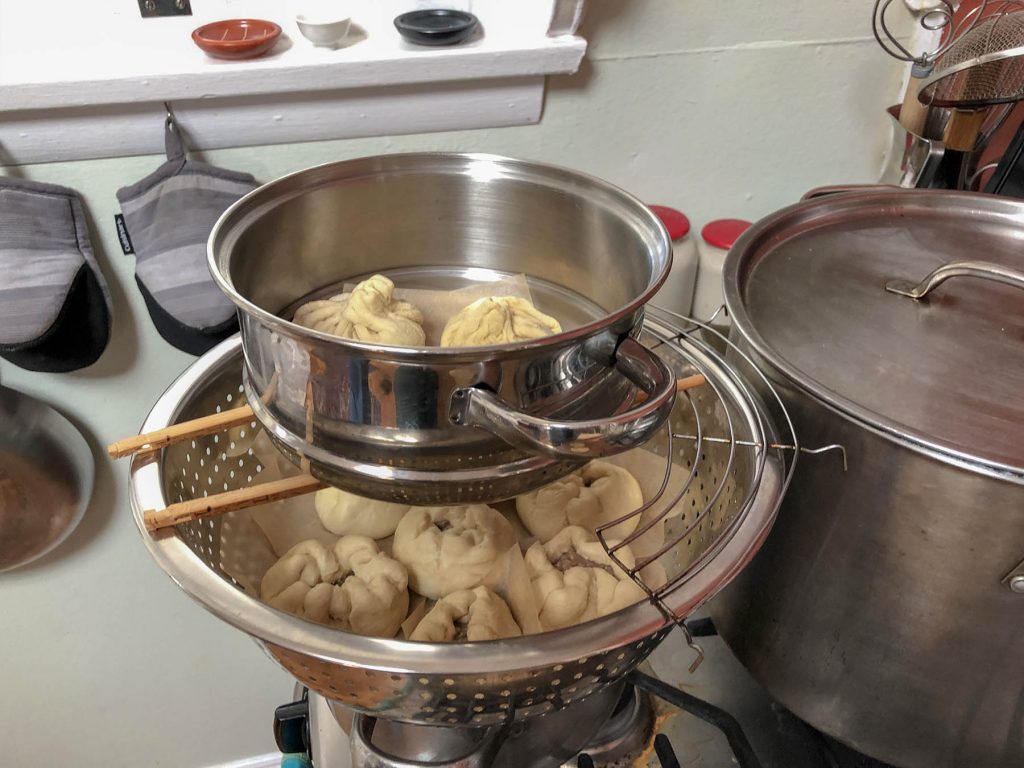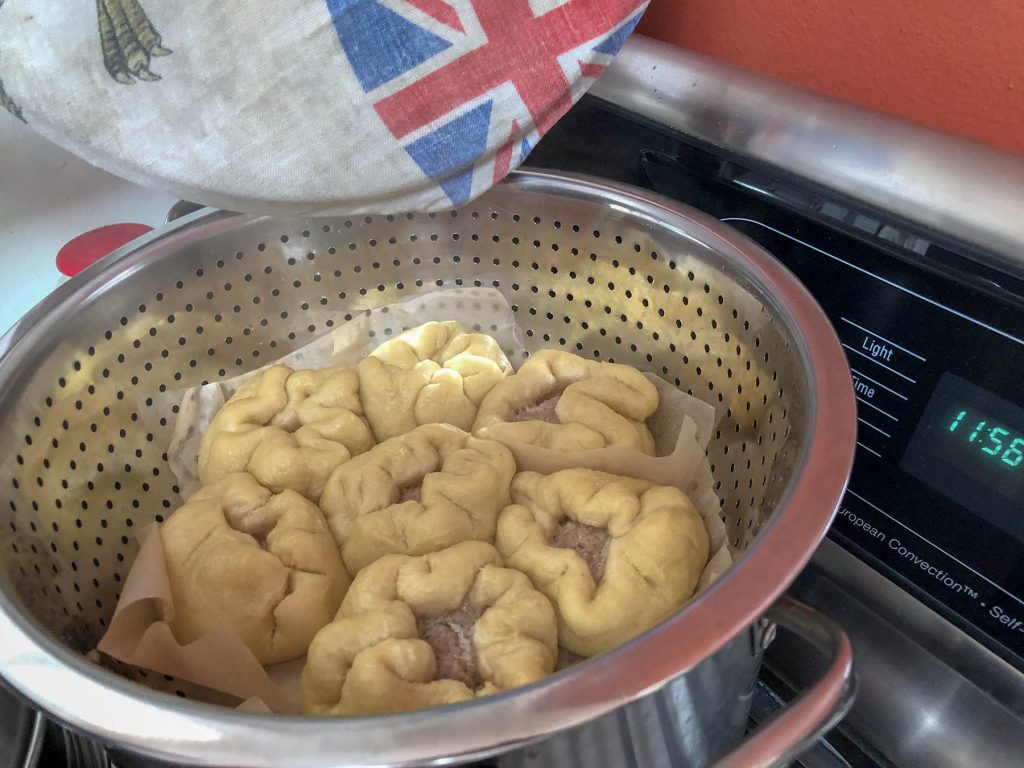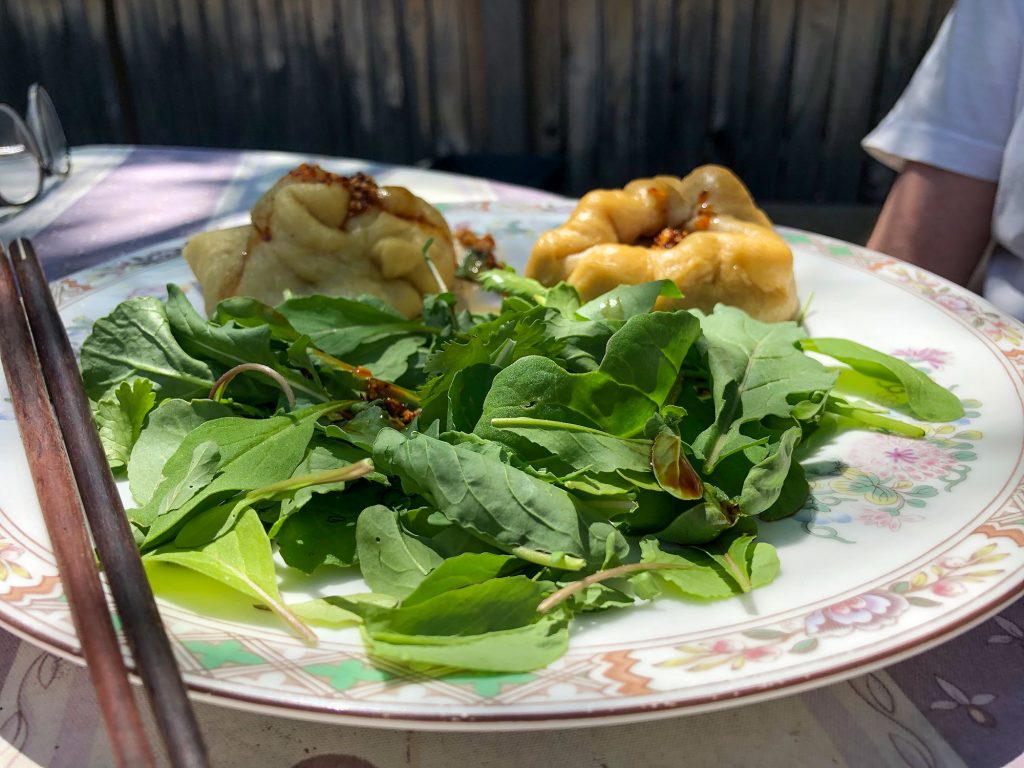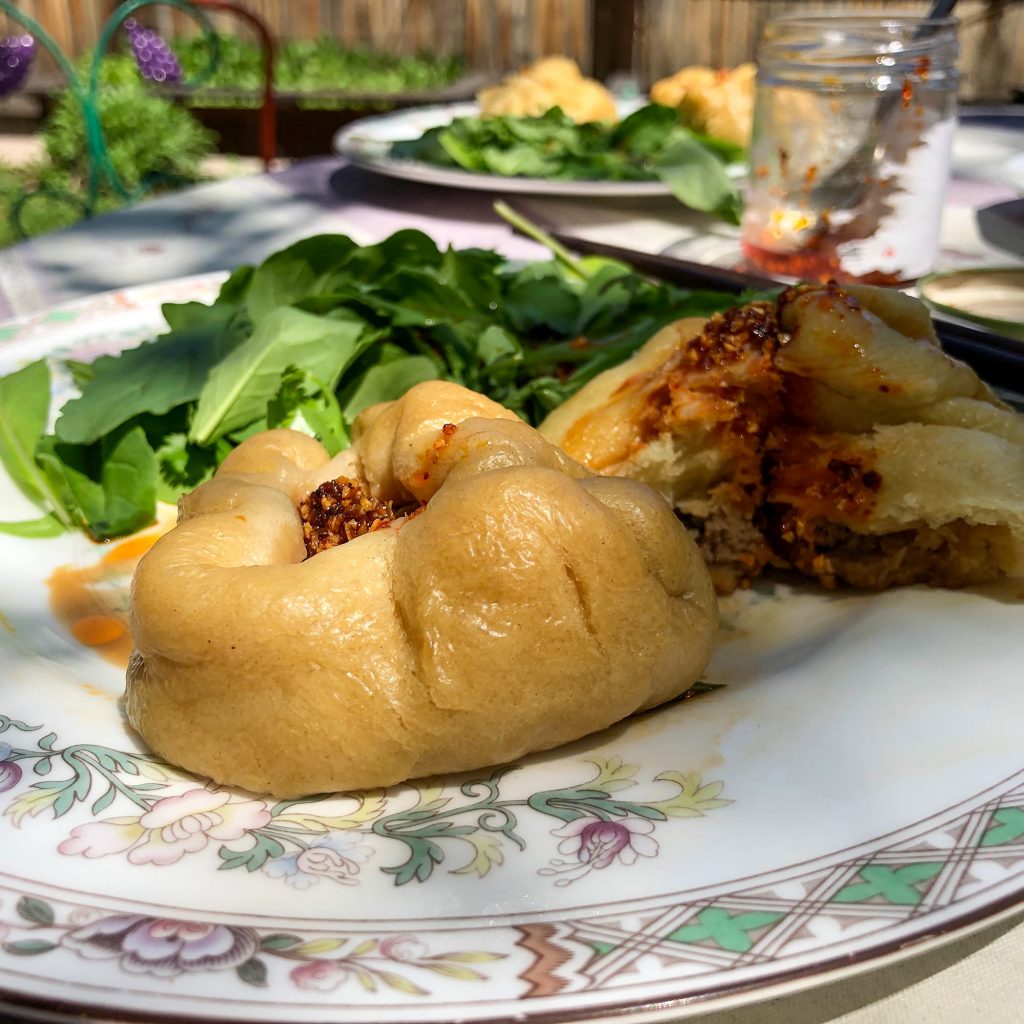Bao Buns Bremner Style
Sunday, May 17, 2020
What’s wonderful about WonderBread? I asked myself as we tried to make bread with small consistent air holes from a sweet dough. The steamed buns Steuart made this week used a dough that reminded me of Wonderbread, and I tried to imagine if that bread from my childhood would be perfect with a pork meatball dipped in Asian sauces. At the end of the day of baking bao, I was sad that we are still in Stay at Home mode, and can’t get out to a Dim Sum restaurant.
Steuart’s final product was wonderful in spite of not being like a restaurant, with a great filling using fresh chunks of ginger. When he was close to running out of filling, he added the rice and vegetable leftovers from the previous night’s dinner to the remaining pork. Those buns were better, less like a solid meatball inside the bready wrap. The original filling was far wetter than a meatloaf, but needed more fiber to be the right contrast to the airy bun. The whole process reminded us of other steamed breads like the Runza from my native land of Nebraska, the Germknodel we made a Christmas ago, a knish from our favorite Dallas deli – Kuby’s, and one of our annual Christmas traditions: the tamale. All of these are best, we think, when the dough is as thin as possible yet still definitely containing the filling. And the filling should be tender and almost fall apart when you open it.
The doughy parts of these buns are lighter than a tamale so the perfect proportion might be more dough to filling than masa to pork. Still, I don’t think these would be ruined by the container being more interesting in texture and flavor. I think we could use this technique and make a bun that more about goodness and less about whiteness. I’m imagining a grainier bread to wrap a lighter, more vegetable-friendly filling – a WonderBun. Steuart’s Aleppo Pepper, Dried Garlic Chili Oil is fantastic on anything, so that can come to the table with this WonderBun. The BBQ sauce he made for the buns today is a keeper, too.
To achieve the texture that our YouTube teachers said was optimal, Steuart punched all the air out of the dough, then formed it into a log. The videos suggested that you can buy a whiter flour than all purpose flour. White and light seems to be the objective of the recipe, a dish that may have been invented as early as 200 C.E. by the military strategist Zhuge Liang. Sometimes the goals of a recipe after such a long history swerve from taste alone. I want what I eat to be the most tasty, as interesting as these other goals may be (when could I use a really white bun?)
The roll of dough was cut into a dozen pieces and each one was rolled out into a thin circle, leaving a little hump in the center. Keith went so far as to roll out the dough into a thin sheet, fold it up in four layers and then form the log. He rolled out all his pieces before assembling any.
The filling is added onto of the hump and then the thumb and index finger make pleats – optimally the lucky number 18 – around the edges forming the conical bun knot, that gets a slight twist at the end. The air pocket it not necessary to protect because it opens up with steaming, we learned today. Steuart let the formed buns rise in the steamer pan without heat for about twenty minutes. Duncan did no second rise after forming the buns, and felt the bread was more the consistency that our teachers desired. You can see this in his photo of the cross section. Keith said the buns could be frozen after being formed and brought straight out to the steamer.
Buns were steamed for about 15-20 minutes. And served with various sauces. After trying the first one, I knew a green salad would be the perfect accompaniment.
Recipe for Steamed Pork Buns
Dough:
350 g all-purpose flour
2 g yeast
67g water
150 ml/g water
22 g sugar
22 g oil
2 g salt
2 g baking powder
Pork:
Ginger, fresh in 1 cm cubes
pepper
scallion
soy salt
oyster sauce
rice-wine vinegar
corn starch
sesame oil
water
Finished Bremner Bao Buns
